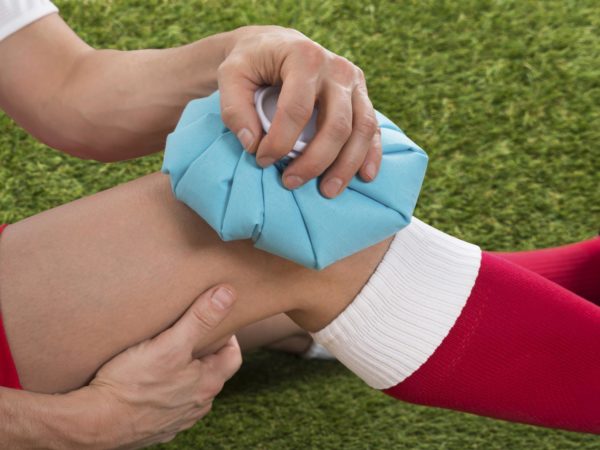Dealing With A Dangerous Exercise Injury?
Could you discuss chronic compartment syndrome? Are there any nutritional supplements, rubs, therapies, or exercises that can help?
Andrew Weil, M.D. | December 6, 2005

Compartment syndrome results from an injury that causes a swelling of muscles or other tissues in the arms, hands, legs, or feet. Muscle groups and their associated blood and nerves in these areas are covered by fascia, a tough tissue that doesn’t expand. As a result, when the injured muscle swells, pressure builds up within the “compartment” created by the fascia, resulting in severe pain. If the pressure gets too high, permanent damage to nerves, blood vessels and muscle tissue can occur.
Acute compartment syndrome is a medical emergency. It usually is the result of a traumatic injury caused by fracture of a bone or a severe bruise to a muscle; a complication of surgery; a crush injury; prolonged blockage of circulation; or long-term use of anabolic steroids. Acute compartment syndrome can come on very quickly. This is not something to ignore, and if symptoms don’t improve with anti-inflammatory medications, swift medical intervention is necessary.
Chronic compartment syndrome, which is not a medical emergency, usually affects the legs and is marked by intense pain and swelling. It is most often caused by repetitive exercise. Typically, the pain disappears when you stop exercising. Symptoms also can include a tingling or burning feeling in the muscle, the feeling that the muscle is tight or full, and pale, cold skin. If the area becomes numb or paralyzed, the only treatment is surgery to relieve the pressure, although this rarely occurs.
For correct diagnosis doctors must exclude other causes of pain and measure compartment pressure before and immediately after exercise. (This is done by inserting a needle attached to a pressure meter into the compartment). Treatment involves avoiding the activities that lead to the problem, applying ice to the injured limb, and elevating it slightly, as well as taking aspirin or ibuprofen to reduce inflammation. You also might try acupuncture or topical DMSO (dimethyl sulfoxide). Made from wood pulp, this chemical penetrates the skin and promotes healing. You can buy it at a health food store. Paint a 70-percent solution of DMSO on the sore area with cotton and let it dry. You may feel warmth or stinging, and experience a garlicky taste in your mouth. Try it three times a day for three days. If there is no improvement, stop using it. If you do feel some improvement, apply DMSO twice a day for three more days, then once a day for a final three days.
Andrew Weil, M.D.









